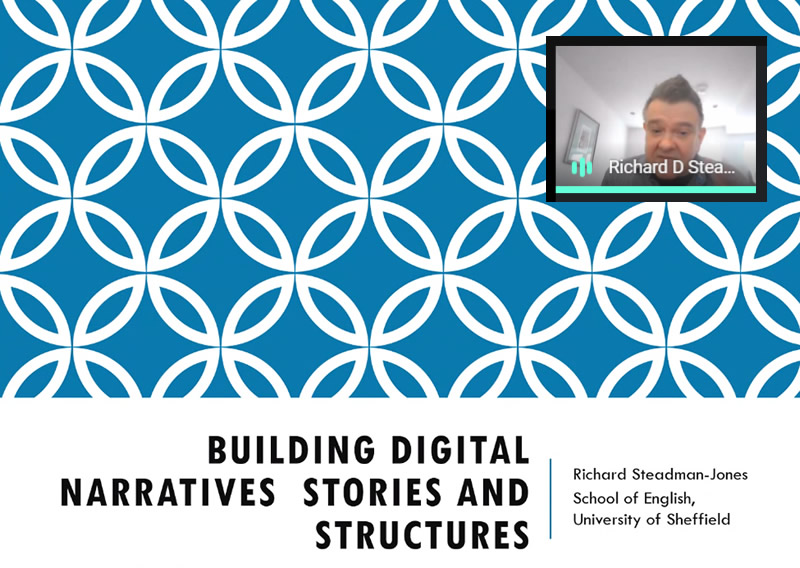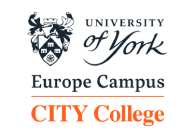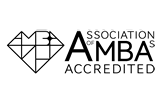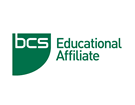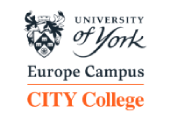The English Studies Department Learns How to Build Narratives and Structure Stories
Where would we be without stories? We live life, reflect on it, escape from it, engage with it through narratives…oral, written, audiovisual as well as digital. On Wednesday, 12th May 2021, the English Studies Department’s last spring semester Personal and Professional Development seminar focused on exactly that. Dr Richard Steadman-Jones, Senior Lecturer of the School of English at the University of Sheffield, delivered an intriguing presentation titled: “Building Digital Narratives: Stories and Structures” that raised awareness towards yet another way to engage with and create narratives, namely hypertexts.
What are hypertexts, one might ask? Think of Wikipedia! Hypertexts consist of chunks of text that are linked together in complex ways that can result in reading them in a different order, potentially resulting in a different story, what some may call a “branching narrative.” Some similar examples are text-based games such as Zork or an audiovisual example is from the BBC TV series Black Mirror, specifically the Bandersnatch episode. The big question is if one can tell a story utilizing this type of structure. The answer is, of course! Dr Steadman-Jones shared various student produced hypertexts as examples and brought other such texts to our attention, such as the Choose your own Adventure print book series.
As Dr Steadman-Jones informs, hypertext stories can adopt different types of structures that lead to different story and reading experiences. There is the linear structure that resembles how we would read a print novel or short story. There is the hierarchical structure that provides us with options that branch off the landing or home page of the story, and what one chooses determines the progress of the plot. In some cases, we may come across a combination of linear and hierarchical structures. Of course, an element of randomness may be added such as rolling a dice to determine a choice. There are also the flat or weblike structures where the chunks of text of linked in a dense network where all chunks are or can be interrelated and lead into and away from each other in very intriguing and complex ways. An example Dr Steadman-Jones brought forth was Edward Falco’s Charmin’ Cleary.
Dr Steadman-Jones further noted how even minute details such as colors, fonts, italics can be significant hints or clues that can reveal information about characters, setting or the plot. Depending on what one may choose, the focalization or point-of-view of the story may change, thus giving another character’s version of the events. The links in hypertexts carry heavy weight as they guide the reader, provide routes one can follow, but they can also subvert expectations. Links can be abstract items thus again pointing at something random or arbitrary in terms of path choice. Then again, they may be invisible thus prompting kinesthetic engagement with the text by having to explore our screen to find the link. Additionally, the order of the information is quite important as the same information but in different order can infer different stories. Or better yet, one text (and depending on the order and structure one adopts) can lead to endless stories.
Dr Steadman-Jones also demonstrated a very helpful, free, and accessible tool one can use to create hypertext narratives. Twine can be downloaded to one’s computer or used online. It enables one to create chunks of text, establish links, insert images, and create a simple linear hypertext or have a go at something more complex. AI Dungeon is a similar type of tool.
All in all, the area of digital narratives and hypertexts is rich as it brings together narrative, digital media, and technology. It combines storytelling, software tools and coding. It can be inspired by areas such as gaming either at a cognitive level, material level, physical level or even be taken into account when considering various debates such as the narratology versus ludology debate or current practices, such as transmedia storytelling. What is more, it reveals new author/creator storytelling practices, new reading experiences and well as different digital literacy skills. For those interested in areas such as linguistics, literature, media, this is not an area to be overlooked!
